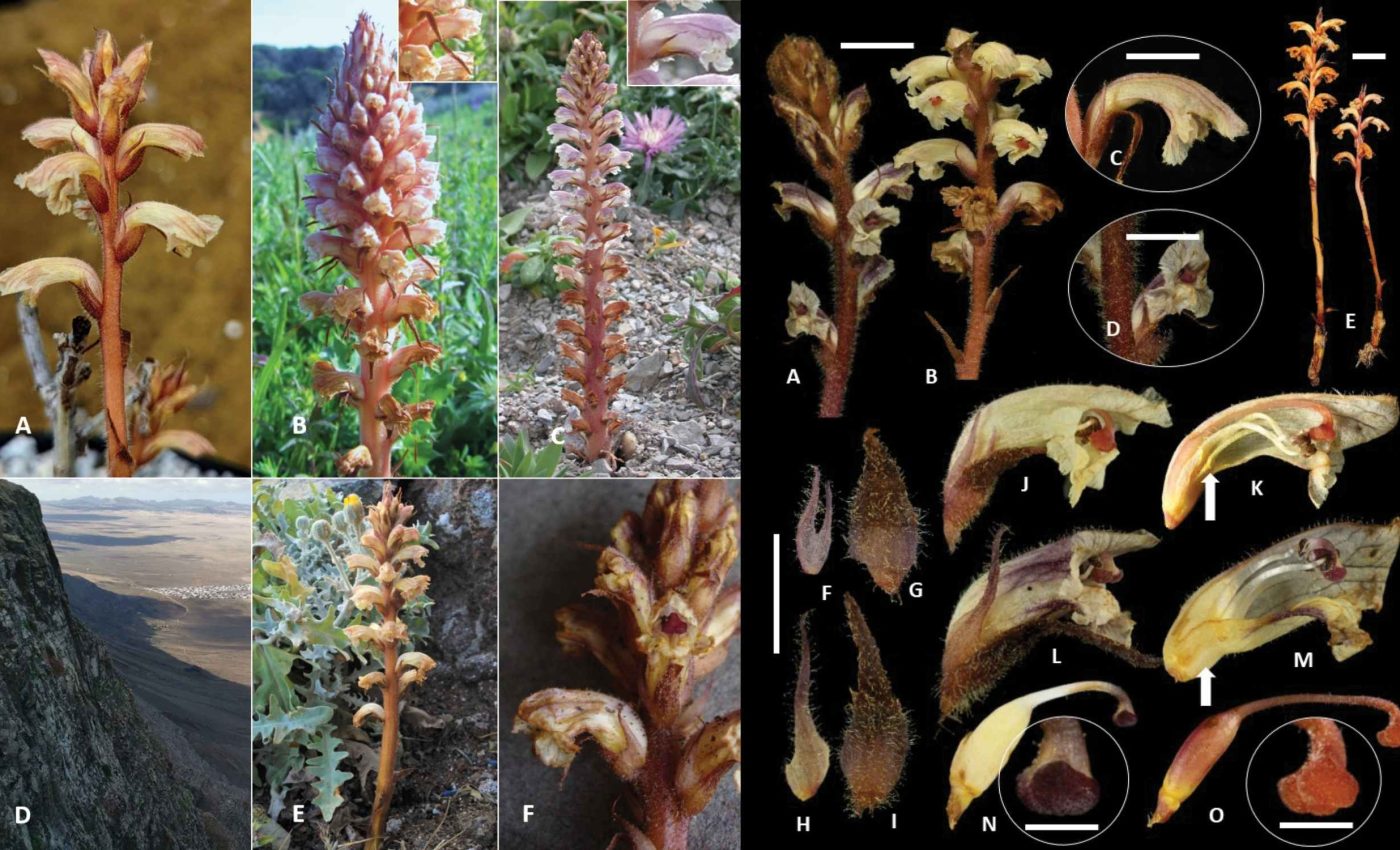
Leafless and mysterious parasitic plant survives by stealing water from other plants
Botanists have formally described a new parasitic plant from the Canary Islands, Orobanche andryalae, after two decades of field work and very patient verification.
It is a tiny member of the broomrape group that taps the roots of other plants for water and nutrients, then blooms with understated charm on harsh volcanic ground. It took time, care, and a steady hand to show it really was something new.
Orobanche andryalae is different
Broomrapes are holoparasites, plants that lack green leaves and do not photosynthesize, so they attach to hosts underground and siphon resources quietly until they flower.
That life strategy, effective yet discreet, helps explain why species can be missed or misnamed for years.
The species stands out by a distinctive set of floral traits, including a markedly cernuous, or nodding, corolla and a high point where the filaments attach inside the flower, features that hold steady even when cultivated.
It grows on thermophilous, or heat loving, volcanic substrates and shows a tight association with Andryala species as hosts, a combination recorded in northern Lanzarote, northwest Tenerife, and the Jandía area of Fuerteventura.
The authors also provide an identification key for the Canary Islands’ broomrapes, a practical step that will reduce future mix ups in this tricky genus.
From field notes to greenhouse proof
Researchers watched Orobanche andryalae in the wild for 23 years, logging five plants at a population near Yé and about 40 near Haría on Lanzarote between 2020 and 2022, which helped map its patchy presence and year to year swings.
They then raised the parasite from seed on its host at the University of Oxford Botanic Garden to confirm that the key traits remain constant in cultivation, an important check when field conditions can blur the picture.
Why identification took so long
Orobanche andryalae sits in a cluster of small flowered species where fine details of floral shape and hair patterns matter, and where different names have historically been applied to similar faces.
Taxonomists have long flagged that this subsection is hard to resolve with morphology alone, especially when pressed herbarium specimens lose color and nuance.
Past research on broomrape biology shows why confusion arises. Local lineages can evolve to prefer particular hosts, which leads to look alike plants with different genetic backstories.
Experimental work has also documented host specific races in Orobanche minor, a close relative, offering a useful model for how host choice can shape divergence in parasitic plants.
In that context, the authors’ combined approach, blending stable floral characters, host identity, and ecology, makes the case for species status without waiting on a perfect phylogeny. The careful cultivation step further strengthens it, because it shows the defining traits are not just environmental artifacts.
Protecting Orobanche andryalae
Based on today’s records, the species occurs in few localities and in low numbers, so the authors recommend treating it as “Data Deficient” until long term surveys reveal more, a cautious call that respects limited data while flagging potential concern.
Orobanche seed banks can, however, remain viable for decades. Apparent absences may hide dormant populations that can reappear when conditions swing in their favor.
The main host, Andryala perezii, is locally common within a narrow range on Lanzarote and Fuerteventura, which hints that more parasite sites may be found as surveys intensify and as botanists check associated Asteraceae more closely.
Seed ecology studies in related broomrapes indicate that prolonged viability is plausible, which bolsters the case for multi-year monitoring before firm threat assessments are made.
Parasitic plants in the spotlight
Taxonomy can feel like naming for naming’s sake, yet here it unlocks clear signals for conservation, survey priorities, and basic biology.
A stable name tied to diagnostic traits lets land managers, herbaria, and local botanists speak the same language when they report new finds.
It also puts a spotlight on parasitic plants, a group that quietly shapes plant communities by redistributing resources underground.
That influence is often overlooked because the action happens at the root, out of sight and away from casual paths.
Finally, this story shows why patience matters in field botany. Twenty three years is a long haul, yet this timescale fits a plant that can vanish for seasons, return in small bursts, and test how carefully we look.
The study is published in PhytoKeys.
—–
Like what you read? Subscribe to our newsletter for engaging articles, exclusive content, and the latest updates.
Check us out on EarthSnap, a free app brought to you by Eric Ralls and Earth.com.
—–













